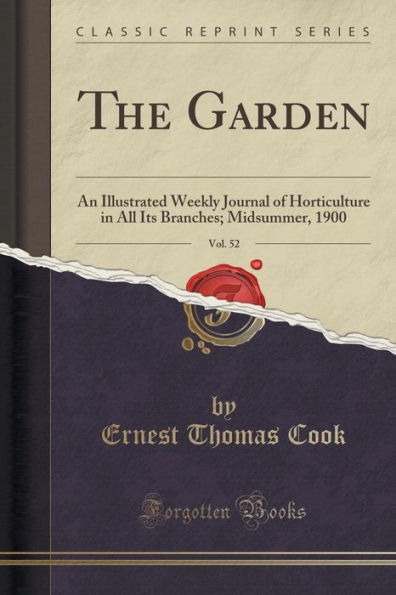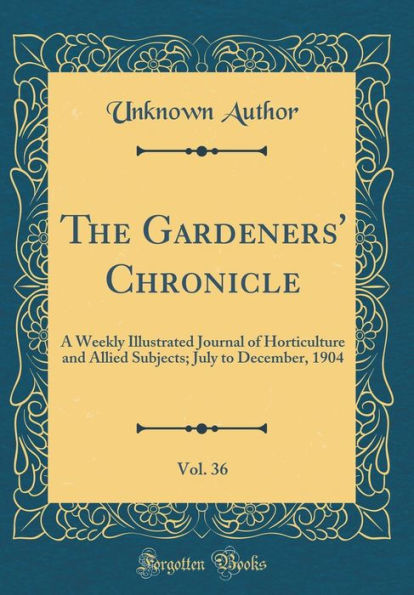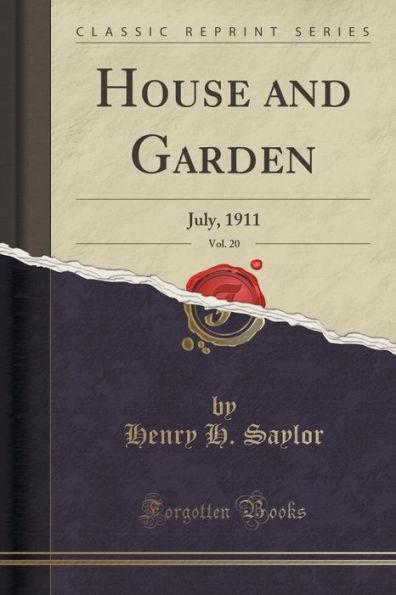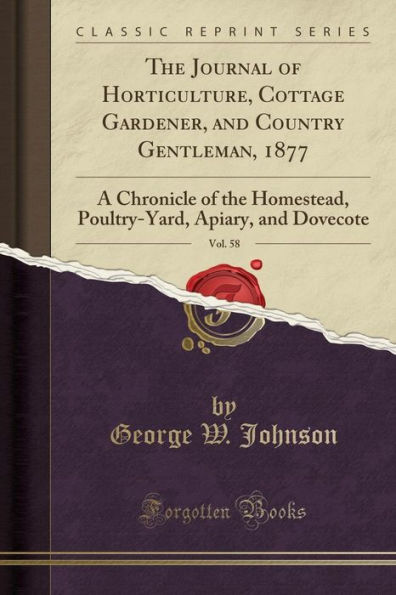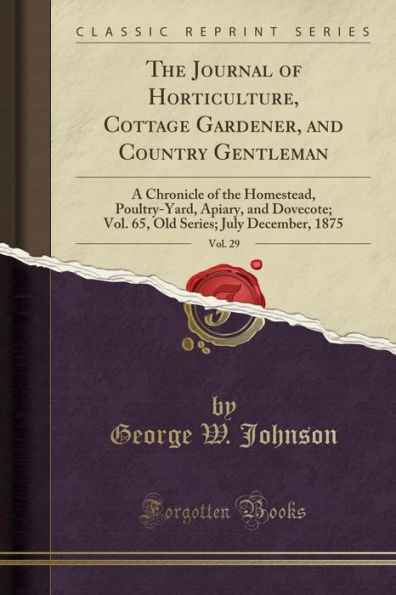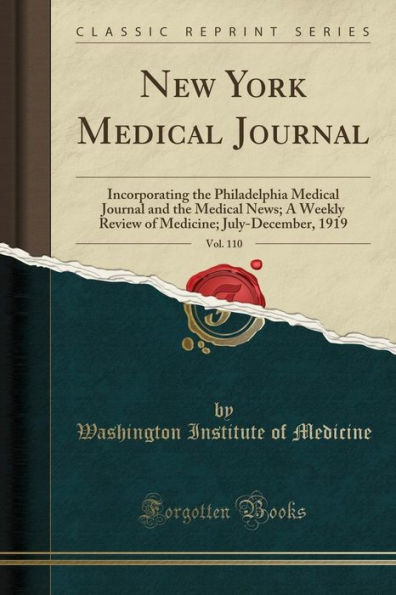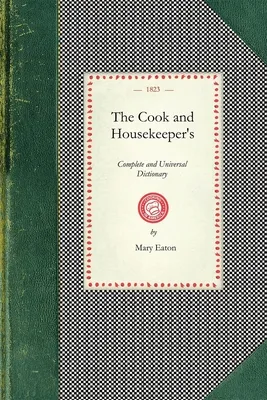Home
The Garden, Vol. 45: An Illustrated Weekly Journal of Horticulture in All Its Branches; Midsummer, 1894 (Classic Reprint)
Loading Inventory...
Barnes and Noble
The Garden, Vol. 45: An Illustrated Weekly Journal of Horticulture in All Its Branches; Midsummer, 1894 (Classic Reprint)
Current price: $19.57
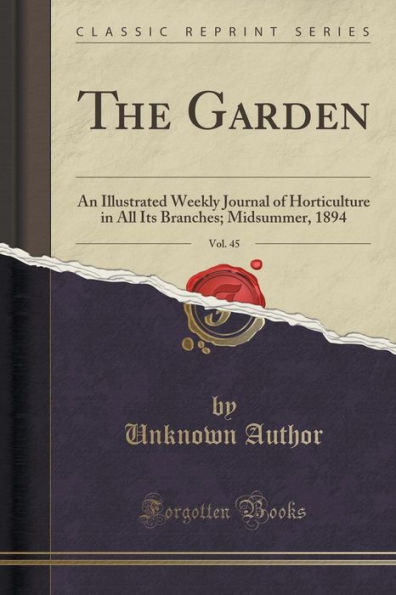

Barnes and Noble
The Garden, Vol. 45: An Illustrated Weekly Journal of Horticulture in All Its Branches; Midsummer, 1894 (Classic Reprint)
Current price: $19.57
Loading Inventory...
Size: OS
*Product Information may vary - to confirm product availability, pricing, and additional information please contact Barnes and Noble
Excerpt from The Garden, Vol. 45: An Illustrated Weekly Journal of Horticulture in All Its Branches; Midsummer, 1894
A'well-grown pot Rose is always handsome, and aflords a better supply of bloom than a greater number of indifferently cultivated plants. In all gardening operations there is more importance attached to a good start than many imagine, and I think this is particularly applicable to Roses in pots, and doubly so when intended for early fore ing. No plant will stand the strain of forcing unless it be healthy; growth may certainly be secured, but the results are far from satisfactory. The present note is intended more particularly for small amateurs, but I may state that many gardeners will derive benefit from its perusal. Of course, there are several of the latter who know as well how to grow Roses as myself, but I so often see so poor plants in gardens of considerable dimensions, that little apology is needed for call ing attention to these practical notes from one who has made the Rose a speciality for many years. The gardener's Roses are too frequently grown among mixed subjects, and therefore there are not the same facilities for correct treat ment as is the case when a house can be set apart entirely for them. Amateurs meet with the same difficulty. None the less I am certain Roses might be grown much better if a little more attention were given to the following hints.
When a Rose has produced its chief crop of flower, the plants are too often neglected and allowed to et smothered with mildew and aphis. The fact 0 numerous subjects being in bloom at this time often makes the free use of the syringe impossible, and, unfortunately, this is at a time when syringing is doubly necessary. All insect life is swarming during spring and early summer, and the cessation of syringing gives them a great advantage. Stand the few Roses at one end of the house, then if a little care be used it is not difficult to keep them syringed as freely as before. Roses must not be treated in the unkind manner too many of our early forced shrubs have to sub mit to, and they will resent such treatment more forcibly than the majority. Unless a plant is grown well after it has flowered, we cannot reasonably expect it to be satisfactory later on.
About the Publisher
Forgotten Books publishes hundreds of thousands of rare and classic books. Find more at www.forgottenbooks.com
This book is a reproduction of an important historical work. Forgotten Books uses state-of-the-art technology to digitally reconstruct the work, preserving the original format whilst repairing imperfections present in the aged copy. In rare cases, an imperfection in the original, such as a blemish or missing page, may be replicated in our edition. We do, however, repair the vast majority of imperfections successfully; any imperfections that remain are intentionally left to preserve the state of such historical works.
A'well-grown pot Rose is always handsome, and aflords a better supply of bloom than a greater number of indifferently cultivated plants. In all gardening operations there is more importance attached to a good start than many imagine, and I think this is particularly applicable to Roses in pots, and doubly so when intended for early fore ing. No plant will stand the strain of forcing unless it be healthy; growth may certainly be secured, but the results are far from satisfactory. The present note is intended more particularly for small amateurs, but I may state that many gardeners will derive benefit from its perusal. Of course, there are several of the latter who know as well how to grow Roses as myself, but I so often see so poor plants in gardens of considerable dimensions, that little apology is needed for call ing attention to these practical notes from one who has made the Rose a speciality for many years. The gardener's Roses are too frequently grown among mixed subjects, and therefore there are not the same facilities for correct treat ment as is the case when a house can be set apart entirely for them. Amateurs meet with the same difficulty. None the less I am certain Roses might be grown much better if a little more attention were given to the following hints.
When a Rose has produced its chief crop of flower, the plants are too often neglected and allowed to et smothered with mildew and aphis. The fact 0 numerous subjects being in bloom at this time often makes the free use of the syringe impossible, and, unfortunately, this is at a time when syringing is doubly necessary. All insect life is swarming during spring and early summer, and the cessation of syringing gives them a great advantage. Stand the few Roses at one end of the house, then if a little care be used it is not difficult to keep them syringed as freely as before. Roses must not be treated in the unkind manner too many of our early forced shrubs have to sub mit to, and they will resent such treatment more forcibly than the majority. Unless a plant is grown well after it has flowered, we cannot reasonably expect it to be satisfactory later on.
About the Publisher
Forgotten Books publishes hundreds of thousands of rare and classic books. Find more at www.forgottenbooks.com
This book is a reproduction of an important historical work. Forgotten Books uses state-of-the-art technology to digitally reconstruct the work, preserving the original format whilst repairing imperfections present in the aged copy. In rare cases, an imperfection in the original, such as a blemish or missing page, may be replicated in our edition. We do, however, repair the vast majority of imperfections successfully; any imperfections that remain are intentionally left to preserve the state of such historical works.
